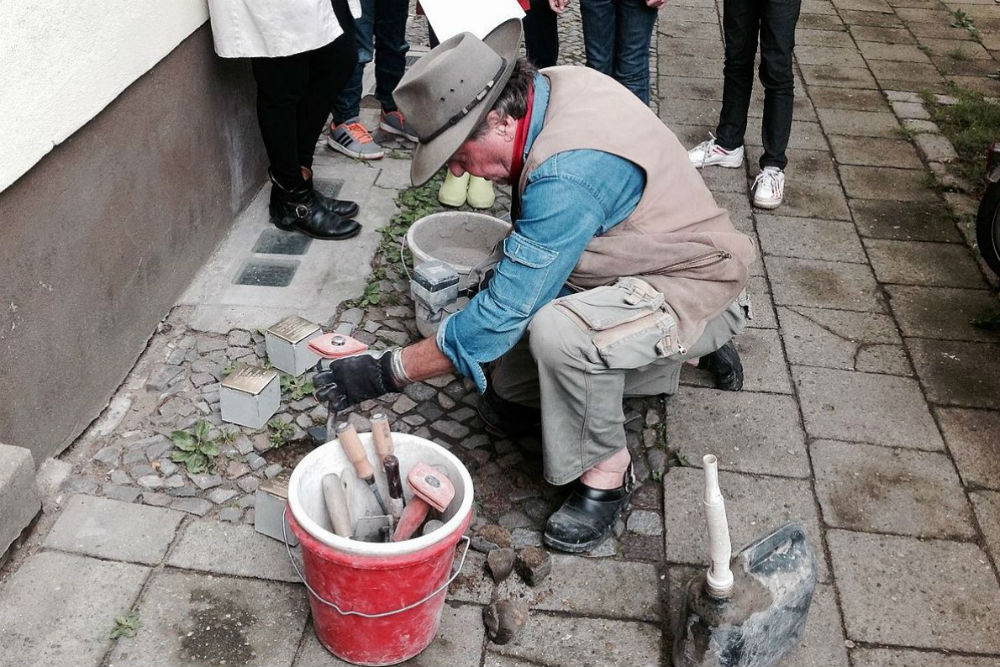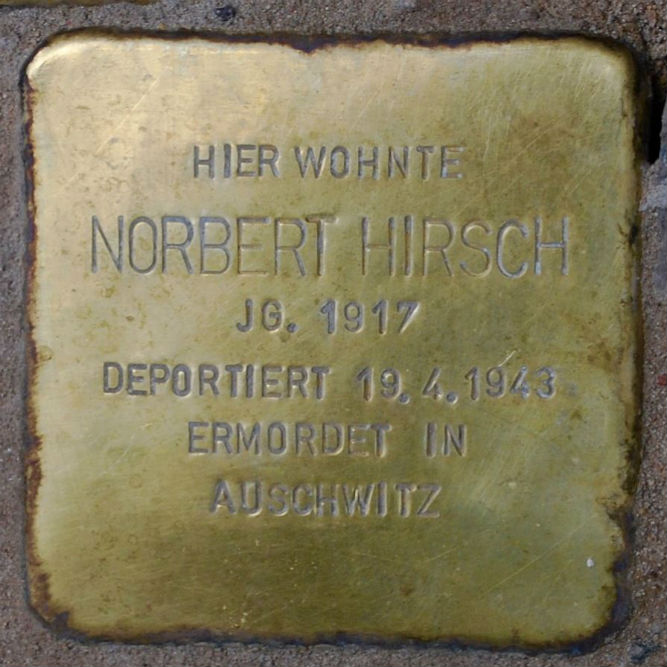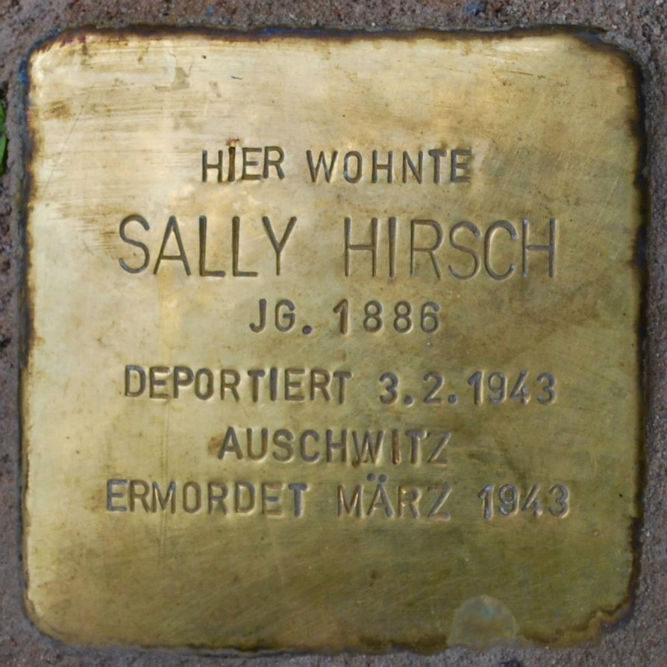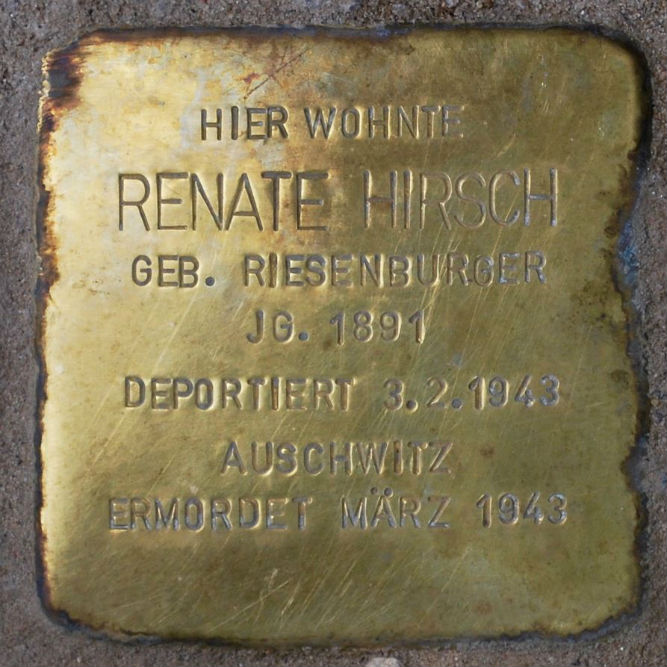Stumbling Stones Raabestraße 11
These small, brass memorial plaques (Stolpersteine or stumbling stones) commemorate the Hirsch family:
* Norbert Hirsch, born 1917, deported 19 April 1943, murdered in Auschwitz.
* Sally Hirsch, born 1886, deported 3 February 1943, Auschwitz, murdered March 1943.
* Renate Hirsch née Riesenburger, born 1891, deported 3 February 1943, Auschwitz, murdered March 1943.
Renate Riesenburger completed training as a tailor. She and Sally Hirsch married in 1913 and moved to Zielenzig where they opened a clothing store. Renate led the buying and selling for the women’s department, managed the tailors. A daughter was born in 1913, and twin sons, Norbert and Martin, were born in 1917. Their daughter died at age 13. In 1931 Renate worked on tailoring modifications at home. Sally traded in textiles. The family moved to Berlin in 1933, and lived at several locations, ending with their last 8 years at Raabestraße 11. Both parents continued working – she as a tailor and he as a trader and manager of 2 stores. In 1938, Sally was fired because he was Jewish. Two months later, son Martin fled to the Netherlands. Norbert stayed in Berlin and in 1939 began preparations to go to Palestine. But of the four, only Martin survived. Sally and Renate were deported, then Norbert. All three were murdered in Auschwitz.
"Stolpersteine" is an art project for Europe by Gunter Demnig to commemorate victims of National Socialism (Nazism). Stolpersteine (stumbling stones) are small, 10x10cm brass plaques placed in the pavement in front of the last voluntary residence of (mostly Jewish) victims who were murdered by the Nazis. Each plaque is engraved with the victim’s name, date of birth, and place (mostly a concentration camp) and date of death. By doing this, Gunter Demnig gives an individual memorial to each victim. One stone, one name, one person. He cites the Talmud: "A human being is forgotten only when his or her name is forgotten."
Do you have more information about this location? Inform us!
Source
- Text: Anne Palmer
- Photos: Franz Richter (1), Franz Richter (2), Franz Richter (3), Franz Richter (4)
- Wikipedia Liste der Stolpersteine, Berlin-Prenzlauer Berg
- Yad Vashem Central Database of Shoah Victims’ Names
- Stolpersteine.eu
Nearby
Museum
- Otto Weidt’s Workshop for the Blind - Berlin
- Anne Frank Centre - Berlin
- German Historical Museum (Zeughaus Berlin) - Berlin
Point of interest
- Water Tower Prenzlauer Berg - Berlin
- St. Bartholomäuskirche - Berlin
- Volkspark Friedrichshain - Berlin
Monument
- Memorial Hans Rosenthal - Berlin-Prenzlauer Berg
- Memorial Franz Hut - Berlin-Prenzlauer Berg
- Memorial Dr. Felix Singermann - Berlin-Friedrichshain
Cemetery
- Jewish Cemetery Schönhauser Allee - Berlin
- German War Graves Georgen-Parochial-Friedhof II - Berlin
- German War Graves and Memorial Civilian Victims - Berlin
Remembrance Stone
- Stumbling Stones Raabestraße 13 - Berlin-Prenzlauer Berg
- Stumbling Stones Winsstraße 7 - Berlin-Prenzlauer Berg
- Stumbling Stones Heinrich-Roller-Straße 22 - Berlin-Prenzlauer Berg









